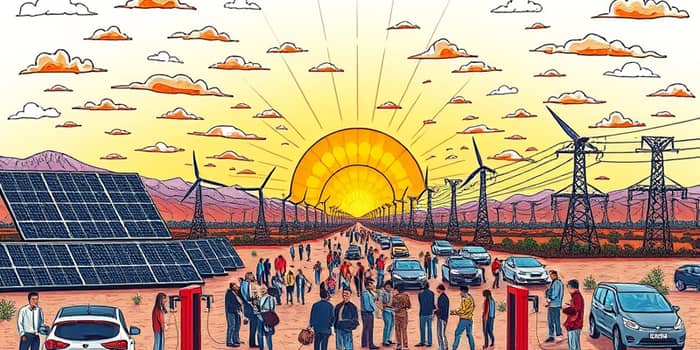
Global investment patterns are undergoing a profound transformation. For decades, fossil fuels dominated budgets and strategies. Today, a decisive pivot toward sustainability, decarbonization, and electrification is reshaping priorities and unlocking unprecedented opportunities.
In 2025, the world is set to invest an unprecedented $3.3 trillion in energy, marking a 2% rise over the previous year. This surge reflects a growing consensus that climate imperatives, energy security, and economic competitiveness are inseparable.
Clean energy technologies will attract $2.2 trillion—more than double the funds flowing into fossil fuels. Electricity demand, national resilience, and industrial modernization now outrank traditional hydrocarbon priorities, signaling a historic realignment of global capital.
Several key segments are leading this transition, drawing diverse investment flows and generating tangible impacts.
Although fossil fuel investment continues to grow, its share falls below a third of all energy spending. Upstream oil investment is experiencing the slowest growth since 2016 (excluding the pandemic dip), underscoring a clear shift in confidence.
These figures illustrate how clean energy draws twice the capital of fossil fuels and how solar now outpaces any single oil or gas segment.
Investment flows vary dramatically across regions, revealing both leadership and gaps. China now matches the combined spending of the EU and US, emerging as the dominant force in clean energy financing.
Meanwhile, Africa—home to 20% of humanity—receives just 2% of clean energy funding. This stark imbalance threatens a truly inclusive global energy transition and requires urgent redress.
To bridge these divides and accelerate sustainable growth, UNCTAD and other bodies recommend multi-faceted strategies. These encompass financial, regulatory, and partnership dimensions.
Institutional investors, development finance institutions, and sovereign wealth funds are now key players. By adopting rigorous sustainable finance standards, they can drive capital toward projects that deliver both returns and environmental benefits.
Despite record funding, significant challenges remain. Grid infrastructure is struggling to keep pace with renewable additions, creating potential reliability crises. Battery storage and network modernization must scale rapidly to support intermittent generation.
Geographic imbalances highlight the need for tailored, region-specific policies. In parts of Asia and Africa, persistent coal reliance and limited private financing access pose major hurdles.
Achieving a truly equitable and resilient energy future demands coordinated global action. Governments, corporations, and civil society must align incentives, share best practices, and commit to long-term funding pathways.
This moment represents more than a financial reallocation; it is an opportunity to redefine how societies power their economies and protect the planet. Investors have the chance to combine profit with purpose, backing solutions that secure energy access, reduce emissions, and foster innovation.
By understanding the trends, embracing the levers, and confronting disparities head-on, stakeholders at every level can contribute to a future powered by clean, reliable energy. The investments made today will determine the world we inhabit tomorrow.
As we strive to deliver on the promise of sustainability, let us remember that each dollar channeled toward renewables, electrification, and modernization has the power to transform lives, economies, and ecosystems. A just and secure energy future depends on our collective resolve to invest wisely and inclusively.
References













